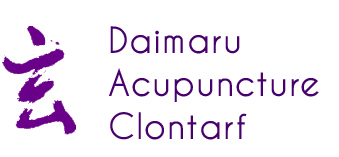

October 31st, 2015 | Posted in 2 Pain, Injuries, Sports, 3 Various Specific Problems
INFLAMMATION AND PAIN: CORTISONE or ACUPUNCTURE
Although we think of inflammation as something bad and something to be suppressed, it, in fact, is an essential function mediated by the immune system.
Inflammation is designed by the body for 3 main purposes; detoxification, repair and protection.
There are various reasons why the primary pathway of inflammation may prove inefficient.
Secondary inflammation, or chronic inflammation, is the pathway of protection that takes over when the primary pathway fails to manage the problem. Cells of the area are protected from rapid destruction by this pathway and it also works to allow the tissues to adapt and compensate for the ongoing problem. Although this is a degenerative pathway, secondary inflammation prevents the tissue assault from spiralling out of control.
Acupuncture works to stimulate the primary pathway of inflammation—detoxification and repair ─ rather than suppressing the pathways of inflammation.
The primary pathway of inflammation is ultimately responsible for any and all healing. We do not have to suppress the secondary pathway when we are able to support the primary pathway and make it more efficient. When this is done, the body will naturally release the second pathway while concentrating on healing rather than protecting.
Glucocorticoid and adrenalineare, the main hormones released by the body as a reaction to stress, are manufactured naturally by the body’s adrenal glands and have a marked anti-inflammatory effect.
These hormones can also be made synthetically. Cortisone and its derivatives are steroids, among the most potent anti-inflammatory drugs known. Their use can substantially reduce the swelling, warmth, tenderness and pain that are associated with inflammation. A cortisone injection can also be used to give short-term pain relief and reduce the swelling from inflammation of a joint, tendon, or bursa in, for example, the joints of the knee, elbow, and shoulder. Cortisone may also be used to deliberately suppress immune response in persons with autoimmune diseases or following an organ transplant to prevent transplant rejection, and some allergies.
Since injections of cortisone are so frequently used for inflammation and pain, it is important to arm yourself with certain facts about the drug and how it affects the human body. Cortisone has as its major application in medicine, the ability to suppress inflammation. It does so by blocking the ability of the immune system to address the problem.
This might seem good on the surface because inflammation produces pain and cortisone has the ability to suppress the pain-causing inflammation.
It is, in fact, suppressing the body’s ability to detoxify, repair and protect. Empirically then, we see that this approach leaves the body wide open for other problems when these pathways are crippled. And, it is well known in medicine, that areas that have been repeatedly injected with cortisone suffer from accelerated damage over time.
The second thing we must be aware of is that any time a drug is used as a blocking agent (e.g. a blocker of inflammation), we know we will encounter side-effects. In other words, if we put up a roadblock to a natural bodily function, then the body will undergo a physiologic compensation in an attempt to “go around” the roadblock. Some of the unwanted effects of cortisone also put the body in danger of further injury and add a level of chronicity to the situation.
Note: While steroid dosage should be kept at the lowest effective level, steroids must not be stopped suddenly if they have been taken for more than four weeks. By this time, some shrinkage of the adrenal glands will have occurred, as their task of producing cortisone has been lessened. If illness or injury follows, the glands may not be able to produce enough cortisone to keep one from going into shock. A slow reduction in the dosage of steroids allows the adrenal glands to regain their ability to manufacture natural cortisone.
